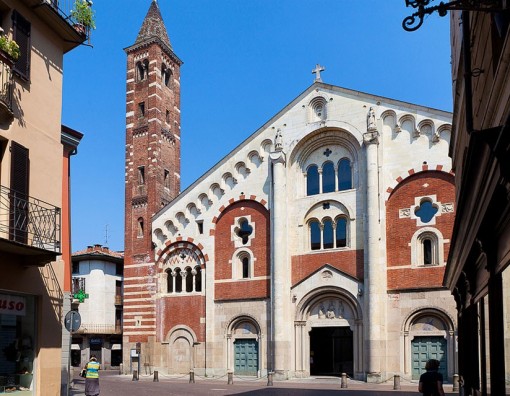Cittadella
The Citadel of Alessandria was built as a result of the Treaty of the Alliance League, stipulated in 1703, during the War of the Spanish Succession, between the Emperor of Austria and Victor Amadeus II, Duke of Savoy: the provinces of Alessandria and Valenza and the lands situated between the River Po and the River Tanaro were ceded to the Duke, as a reward for having fought at the side of the Habsburg Empire. The need to build a fortified citadel to protect the city was immediately clear and the project was entrusted to the military engineer Ignazio Bertola. The Citadel of Alessandria was part of a vast programme to defend the Savoy State, which included a system of forts to control the Great and Little St. Bernard Passes, the Brunetta fort in Susa and the Fenestrelle fort in Val Chisone. The forts of Cuneo and Saorgio and that of Ceva in the Tanaro Valley already existed. The Citadel would become the core element of the Piedmont defence system. Following the defeat of the Piedmontese troops in the First Italian Campaign (1796) of Napoleon Bonaparte, the Citadel and the town of Alessandria fell under French rule. Three years later the Austrian-Russian forces forced the French to lay down their arms. However, just a few months later, on 14 June 1800, following the Battle of Marengo, the French re-took possession of the fortress and the town. Napoleon ordered the demolition of all the fortresses of the Piedmont defence system, except for the Fort of Fenestrelle and the Citadels of Turin and Alessandria: indeed, the latter was destined to become the greatest French defence work of the Po Valley and essential logistics centre for military operations in Italy. With the fall of the French Empire, Alessandria was re-integrated into the Savoy State. The Citadel was again the setting of history during the 1821 uprisings: the soldiers of the Piedmontese garrison rose up and took possession of the Citadel, declaring loyalty to King Victor Emmanuel I. It was then that the constitutionalists raised the three-colour “carbonaro” flag above the Citadel. Subsequently, the realist troops of Charles Felix, who succeeded Victor Emmanuel I to the throne, defeated the constitutional armies and suppressed the uprisings, reclaiming the stronghold of Alessandria. In 1833, Andrea Vochieri, a member of Giuseppe Mazzini's Giovine Italia, was imprisoned in the Citadel. Between 1855 and 1857, new defence works were built: the forts of Bormida, Acqui and of the Railway. Alessandria became an entrenched camp to control the Tanaro-Bormida river system. During the Second War of Independence against Austria, once again, the Citadel and the entrenched camp of Alessandria were the centre of the defence system and the logistics centre of the French army of Napoleon III, who had come to the aid of Piedmont attacked by Austria. Following the proclamation of the Kingdom of Italy, the town became Army Command headquarters and the functions of the Citadel were reduced to those of barracks of different regiments, including the 37th Infantry Regiment of the Ravenna Division, which was stationed there, on several occasions, until the Second World War. The Germans occupied the Citadel from 1943 to 1945 and it became the headquarters of the 52nd Heavy Field Artillery Regiment in the 1950s. To this day, the Citadel of Alessandria remains one of the most impressive 18th century permanent fortifications of Europe.
Information and contacts
via Pavia, 2 - 15121 Alessandria (AL)
Telephone: +39 0131 400.35





